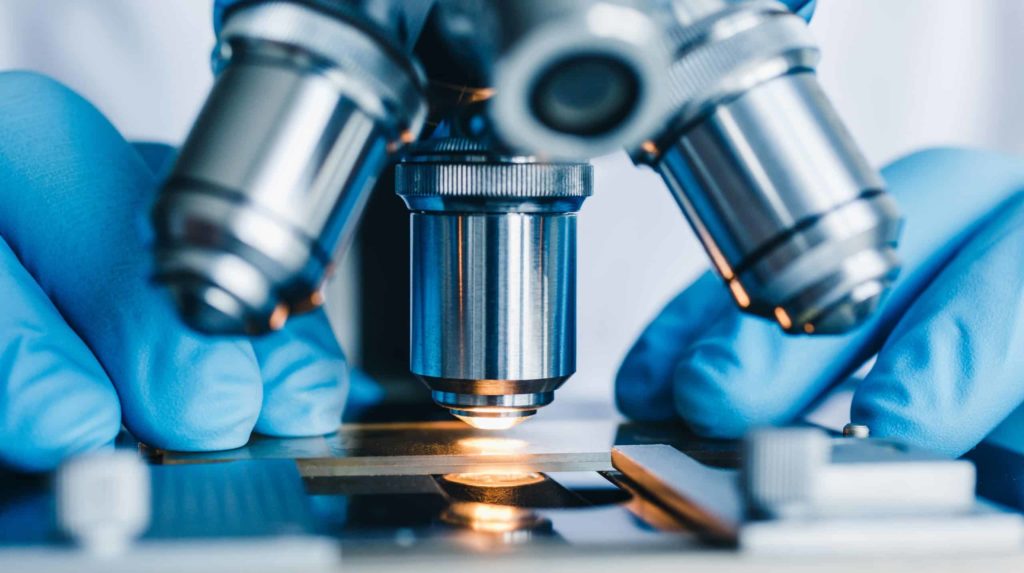Testing of metallic materials and alloys
From buildings and infrastructure to household appliances, every day we are surrounded by at least eighty different types of metallic materials, which are essential for many industries.
Therefore, checking their properties and making sure that they will fulfill the function for which they are designed is a fundamental task, identifying from their mechanical properties to their chemical analysis, through other types of tests that will make an accurate portrait of the material.
For this, Infinitia Industrial Consulting offers you our laboratory equipment and the expertise of our professionals, who will develop precise tests adapted to each case in order to check the qualities of metallic materials.
What are metals?
Metals are chemical elements characterized by common properties such as high conductivity of heat and electricity and high density, among others. The origin of the word metal comes from the Greek ‘metallon’, which can be translated as “to extract” or mine from the ground.
In their pure state, metals are difficult to find, as they are usually buried in ores along with other metallic deposits. However, the earth’s crust contains many. In fact, three-quarters of the 118 elements in the periodic table are metallic. All the elements classified as metals have the following in common:
They are opaque, silver-gray in color, with exceptions such as gold and copper, and shiny.
They are cold to the touch, solid at room temperature – except for mercury, which is a liquid – and have a high melting point.
Strong, crystalline, ductile, dense, malleable and sonorous.
Excellent conductors of heat and electricity.
They react easily on exposure to other elements, including oxygen, which makes metals difficult to extract in their pure form from the earth’s crust.
Metal is found almost everywhere, either in pure form or as an alloy. A metal that is usually combined in molten form with other materials is called an alloy and, in this case, the application possibilities are endless.
Structural alloys, for example, can withstand extremely high loads and repeated impacts, so they are used to build roads, bridges and buildings, and form part of vehicles and aerospace applications.
The creation of alloys has made it possible to customize the production of metals for thousands of uses. However, all types of metals have a multitude of applications. Among other things, they are used to make tools, cables, appliances, utensils, protective coatings, packing, ornaments and medical equipment.

Most common types of metals used in the industry and their usefulness
Cast iron
It is the compound formed by a mixture of multiple elements, including carbon, silicon and iron. The higher the carbon content, the better the flow characteristics during the casting process.
Cast iron has applications in construction, bridges, engineering components, household and kitchen appliances.
Stainless steel
Stainless steel is an alloy made by incorporating chromium, nickel and other metallic elements into steel. Its anti-corrosion property derives from the chromium component of the alloy.
It is a versatile material, widely used in many households. Its applications range from the manufacture of kitchen utensils, tables, sinks, washing machines and other household products to industrial piping and building structures.
Steel
Carbon steel is an alloy of iron and carbon that is usually classified into three groups: low, medium and high carbon steel. The more carbon used to make the steel, the harder the alloy will be.
Carbon steel is often used to make tools and mechanical elements, but is best known as a structural building material .
Aluminum
Unlike other metallic elements, aluminum is not present in nature as a direct metallic element, but is extracted from bauxite, which contains 50% alumina. And although the history of aluminum’s application is relatively short – it was discovered in the 18th century – the production of aluminum products on the market now far exceeds the sum of other metal products.
Aluminum metal has applications in the automotive industry, aircraft parts, cookware, packaging and furniture.
Magnesium
It is an important non-ferrous metal that is lighter than aluminum and can form a high-strength alloy with other metals. It also has good thermal conductivity, good damping and electromagnetic shielding performance, simple processing and easy recycling, and is therefore one of the most widely used metallic materials in engineering.
Magnesium is widely used in aerospace, automotive, electronics, mobile communications, metallurgy and other industries.
Copper
Copper is an excellent electrical conductor, as its conductivity is surpassed only by silver. It is also very easy to extract. Copper is used in wires, motor coils, printed circuits boards, roofing materials, plumbing, heating, jewelry and kitchen utensils. It is also one of the main alloying ingredients for making bronze.
Chrome
Chrome is usually divided into three types: decorative plating, hard chrome plating and black chrome plating. As decorative plating it is often applied on many automotive components, such as door handles and bumpers.
On the other hand, hard chrome is used more in the industrial sector , e.g. in jet engine components, plastic molds and shock absorbers. Black chrome, on the other hand, is mainly used in solar energy panels.
Titanium
Titanium is very special, it is a light but very hard and corrosion resistant metal. In addition, titanium is resistant to both high and low temperatures. All these advantages are essential to withstand the conditions of outer space, making it a good material for manufacturing rocket and satellite engine casings and spacecraft.
Thanks to its high strength-to-weight ratio and excellent corrosion resistance, titanium fasteners are used in the aerospace, automotive and medical equipment industries.
Contact with us
receive a tailored professional response

Properties of metallic materials
Mechanical properties play a very important role in choosing the right alloy for the job, since they describe how a material responds to applied loads or forces. They are as follows:
Resistance
Fatigue resistance
In order to know their properties and to find out how they work, a series of tests, the mechanical properties tests, are carried out.
Testing of metallic materials
Throughout the casting and machining processes, as well as during the product’s lifetime, the chosen material will be subjected to many external forces. By testing mechanical properties, manufacturing professionals can make the right material and process decisions.
In the manufacturing world, the most important mechanical properties depend on the intended use of the product. Since mechanical properties vary depending on the environment, the design process must perform a thorough analysis of the environment in which the product will be developed, including temperature, humidity and load requirements.
Similarly, all the forming processes to which the material will be subjected before becoming a final product must also be taken into account.
Often, materials and reverse engineering experts are tasked with finding a balance between performance metrics, such as strength, and process metrics, such as machinability. But how can we know all this? The answer is very simple, thanks to metallic materials testing.
The most common metal materials tests include chemical analysis, tensile properties, and flexural and hardness tests. This combination of tests provides a reasonably good baseline for a metal sample.
In this regard, chemical analysis by GDS provides a rapid and relatively inexpensive method for analyzing most aluminum, brass, carbon steel, low alloy steel, cast iron, superalloys and stainless steel materials.
Similarly, tensile tests provide useful information on the strength and ductility of the metal, while Brinell and Rockwell hardness tests or microhardness tests are also useful, as they can often be correlated with tensile strength and performed on smaller samples.
However, depending on the application to be carried out on the metal, there may be other properties that are important, such as corrosion resistence, case depth, or microstructure, or plating thickness. So, among others, metallographic tests will also be carried out.
The microstructure of a metal can reveal useful information about material failures, micro-cracks, as well as processes such as heat treatment, forming, forging, extrusion, cold rolling, hot rolling, threading, heading and drawing.
If carbon steel is heated to a bright red color, the microstructure may be altered depending on the rate of cooling. The cooling of carbon steel will generate a hard, brittle structure called martensite, which can be made less brittle by a heat treatment process called tempering.
Ultimately, failure analysis in metallic materials provides a unique advantage in finding the probable cause of a failure. For example, scanning electron microscopy of a fracture surface can be performed to identify its initiation point, as well as the mode of propagation and its velocity. On the other hand, we can also obtain a complete picture of the failure with corrosion testing.
At Infinitia we have extensive experience in materials testing and troubleshooting. If you want our professionals to guarantee the proper functioning of your materials, contact our forensic engineering team to offer you the best solution.

Contact with us
receive a tailored professional response




